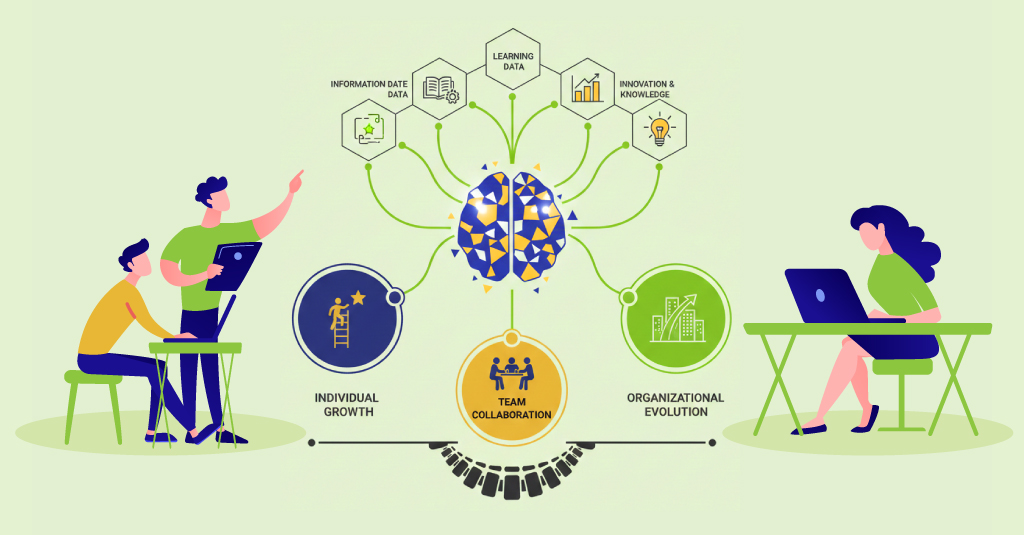In our previous phase, we focused on helping learners retain and apply knowledge through thoughtful reinforcement strategies, nudges, recall activities, and peer interactions that keep learning alive long after the initial training. But even the best-designed reinforcement plans are incomplete without feedback. That brings us to the next phase: truly listening. Because sustaining learning impact isn’t just about what’s delivered, it’s also about what’s heard, felt, and experienced by the learners themselves. In Phase 6, we explore how to build structured, ongoing feedback loops that capture real learner voices and translate them into meaningful improvements.
Too often, feedback is collected but not truly heard. In this phase, we build a system to listen with intent, through pulse-check surveys, interviews, and data analysis that go beyond just counting responses. Because real insights come from capturing how learners feel, what they do with their learning, and where they get stuck.
Implement Interval-Based Pulse Surveys
Rather than waiting until the very end, feedback should be gathered at different points in the learning journey. Interval-based pulse surveys help check in with learners when the experience is fresh, while also capturing how they feel weeks later when they try to apply what they learned.
These short, focused surveys, sent at just the right moments, keep response rates high and give us a steady stream of insights.
For example:
Right after a module: Was it clear? Relevant?
Two weeks later: Were you able to apply anything yet?
A month in: What’s still unclear or difficult?
Carry Out Insight Mining
Whether it’s open-text feedback from learners or numeric scores across modules, we look for:
Common pain points or repeated requests
Drop-off moments in the learning journey
Differences between teams, roles, or geographies
Signals of what’s working exceptionally well
The goal isn’t just to tweak content, it’s to optimize the experience continuously based on evidence.
Conduct In-Depth Qualitative Interviews
Sometimes, a conversation reveals what a survey never could. One-on-one interviews with learners, especially from different roles or business units, help uncover nuanced stories about how learning is (or isn’t) landing in the real world.
You might ask:
What’s changed in how you approach your work after this program?
What helped the most? What felt missing?
Can you describe a moment where this learning helped you solve a real problem?
These insights bring the human side of learning to light, and often inspire the next wave of improvements.
It is particularly helpful to invite feedback from supervisors and managers.
Here is a list of sample questions that can be used for a few weeks/months post-launch to gather feedback.
scroll right to read more
| Section | Question | Response Type | Purpose |
|---|---|---|---|
| Application of Learning (Behavior Change) | To what extent have you/your team applied the skills/knowledge from this training in your daily work?What specific tasks or situationshave you used your new skills in?Have you faced any challenges in applying what you learned? If so, what were they? | 5-Point Likert Scale (Not at all → Very often)Open-endedOpen-ended | Assesses whether learning is translating into real-world applicationIdentifies practical applications and relevance to job rolesHighlights barriers to implementation and areas needing reinforcement |
| Manager and Peer Support (Behavior Change) | Have you received support or encouragement from your manager to apply what you learned?Have you noticed any changes in your team’s approach or behavior as a result of this training? | Yes/No + ExplainYes/No + Explain | Measures managerial involvement in learning transferEvaluates impact of learning intervention at a team level |
| Impact on Performance & Business Outcomes (Results) | Have you observed any measurable improvements in your performance since completing the training?Have you noticed improvements in key business metrics (e.g., productivity, customer satisfaction, efficiency) as a result of applying this training?If yes, can you provide specific examples or data showing this improvement? | Yes/No + DescribeMultiple Choice: Yes, Somewhat, No, Not SureOpen-ended | Directly connects learning to improved work performanceLinks learning outcomes to business impactHelps quantify learning impact for organizational decision-making |
| Continuous Improvement | What additional support/resources would help you apply this learning more effectively?What suggestions do you have for improving future learning programs? | Open-endedOpen-ended | Identifies opportunities for reinforcement and further developmentEnsures training is continuously refined based on participant insights |
















